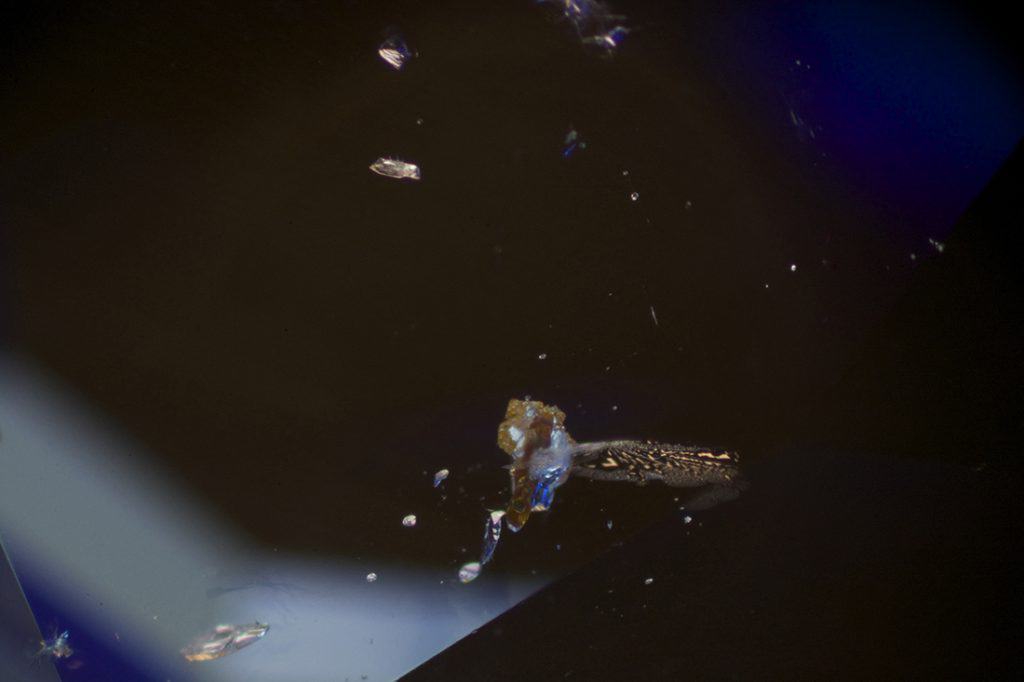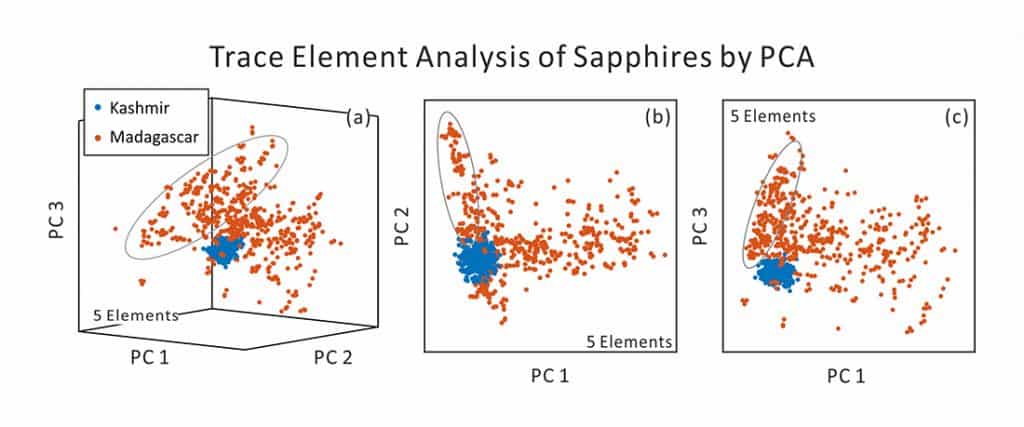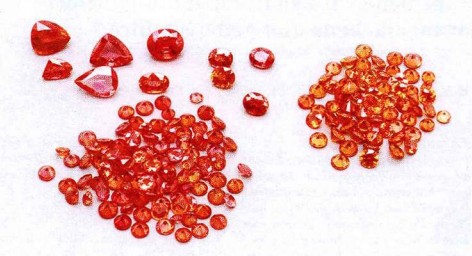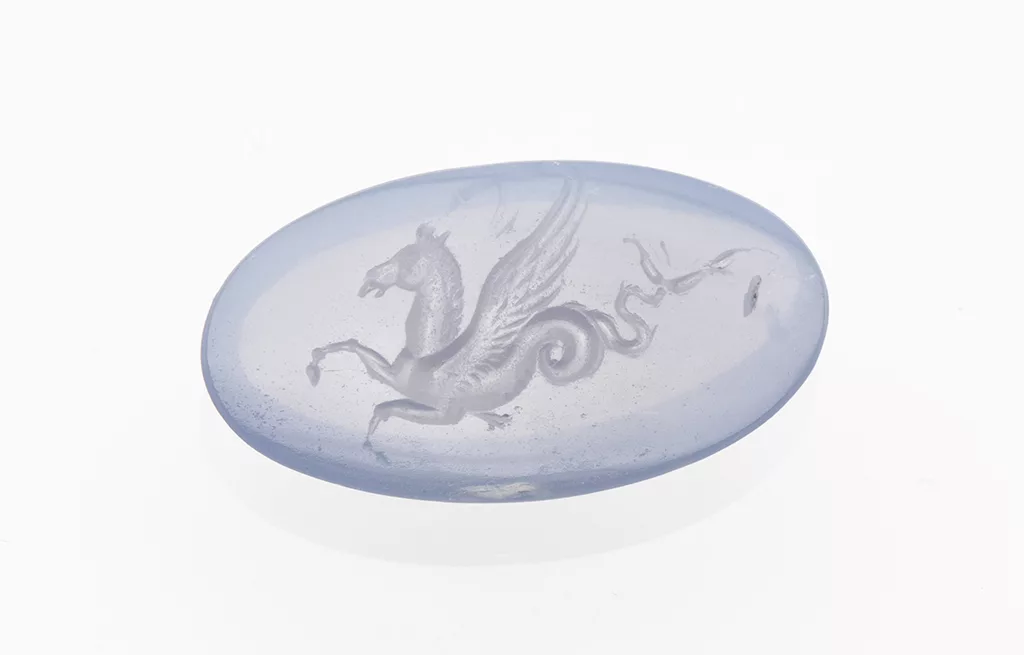
GemTOF Analyses of Sapphires from Madagascar and Kashmir

by Dr. H. A. O. Wang, first published in Facette 24 (February 2018)
Since September 2016, a sapphire mining rush brought a gem deposit close to Ambatondrazaka, Madagascar into the focus of the gem industry. The sapphire rough unearthed in the region sometimes show excellent quality and large sizes (Perkins 2016, Krzemnicki 2017, Pardieu 2017). In the beginning of 2017, gem testing laboratories started to receive cut stones from this new area for gem analysis and issuing reports. As stated in a trade-alert by SSEF in early 2017, some of this new sapphire material may resemble internal features of Kashmir blue sapphires, therefore careful microscopic investigations and further analysis are needed to tackle this challenge. Besides microscopic analysis, other analytical methods, e.g. GemTOF analysis, can bring further evidence and help gemmologists determine the geographic origin of such sapphires.
In this context, we initiated a number of research projects including detailed GemTOF analysis of samples from Madagascar and Kashmir. Samples labeled as Madagascar consist of materials from the newly discovered deposit in Ambatondrazaka as well as other deposits from Madagascar. More than 250 samples have been analyzed on GemTOF in the past year for this study. On average, each sample has been measured with 4 replicates, and quantitative chemical results were imported into the database. In order to achieve comparable results, we maintained stable GemTOF performance and reported reproducible limits of detection (LOD, an indicator of the instrument’s figure of merit) of most isotopes. With this prerequisite, it allows us to compare chemical results of sapphires over a long period of time.
For the purpose of visualizing chemical results, we selected five elements, magnesium (Mg), vanadium (V), iron (Fe), gallium (Ga) and tin (Sn) and performed principle component analysis (PCA). Subsequently, the first three principle components (PCs), which explained in total >90% of variation, were selected for data visualization. In Figure 3 (a), the scatter plot using first three PCs shows that sapphires from Kashmir tend to chemically closely group together, and others from Madagascar tend to spread much wider. The closely grouped Kashmir sapphires can also be seen from plots of PC1 vs PC2 and PC1 vs PC3. A gray circle is a visual guide to locate ‘Kashmir-like’ material from Ambatondrazaka, Madagascar. When a new sapphire shall be tested, such plots provide gemmologists with valuable complementary information for origin determination.
Trace elements are present in the matrix of sapphire. They are important for color and give unique chemical fingerprints for origin. In all Madagascar and Kashmir sapphires, Mg, V, Fe, Ga and Sn are above LOD. Median concentrations of V (11 ppm), Fe (1100 ppm), Ga (70 ppm) and Sn (0.5 ppm) in Madagascar sapphires are about double those of values in Kashmir samples. Trace elements titanium (Ti) and chromium (Cr) were detected in more than 95% of the samples. Interestingly, median concentrations of Ti and Cr, coloring agents, do not differ between the two origins, which could indicate sampling procedure may not be biased in color. About 60% of the samples have shown detectable amounts of germanium (Ge) and tantalum (Ta). Furthermore, Madagascar sapphires have a distinct higher amount of Ta, median 0.04 ppm, but similar Ge median concentration of 0.15 ppm.
Benefiting from simultaneous detection of almost all elements in the periodic table, GemTOF records elements that also rarely appear in sapphires. For example, beryllium (Be), niobium (Nb), lanthanum (La), cerium (Ce) and thorium (Th) etc. are more likely to be detected in Madagascar sapphires. Especially, many samples from Madagascar have shown a signal higher than LOD for thorium; however most of them are close to LOD, hence not significant. Others, with significantly higher Th than LOD, would be promising for direct age dating on sapphires.
Although statistics has shown general differences between sapphires from these two origins, it may still pose challenges if individual cases are under discussion, mainly due to wide margins for the elemental concentrations or overlaps, and boundary cases can be seen from Figure 3. Fortunately, origin determination relies not only on chemical analysis but also on a range of other methods including detailed examination of inclusions that can be characteristic for certain origins. For analysts, it is our responsibility to present gemmologists more straightforward visualization of the chemical data (not only from GemTOF but also other analytical instruments). To reach this goal, advanced statistical approaches are in development for sapphires as well as other gemstone varieties, e.g. emerald, and results will be summarized in future articles.




